Tunable Broadband THz Waveband Absorbers Based On Graphene for Digital Coding
Abstract
1. Introduction
2. Materials and Methods
3. Results and Discussions
3.1. Double Notch Single Ring Metamaterial Absorber
3.2. Four Notch Dual Ring Metamaterial Absorber
4. Conclusions
Supplementary Materials
Author Contributions
Funding
Conflicts of Interest
References
- Alù, A.; Engheta, N. Multifrequency optical invisibility cloak with layered plasmonic shells. Phys. Rev. Lett. 2008, 100, 113901. [Google Scholar] [CrossRef] [PubMed]
- Ergin, T.; Stenger, N.; Brenner, P.; Pendry, J.B.; Wegener, M. Three-dimensional invisibility cloak at optical wavelengths. Science 2010, 328, 337–339. [Google Scholar] [CrossRef] [PubMed]
- Manapati, M.B.; Kshetrimayum, R.S. SAR reduction in human head from mobile phone radiation using single negative metamaterials. J. Electromagn. Waves Appl. 2009, 23, 1385–1395. [Google Scholar] [CrossRef]
- Mookiah, P.; Dandekar, K.R. Metamaterial-substrate antenna array for MIMO communication system. IEEE Trans. Antennas Propagat. 2009, 57, 3283–3292. [Google Scholar] [CrossRef]
- Zhu, Y.; Hu, X.; Fu, Y.; Yang, H.; Gong, Q. Ultralow-power and ultrafast all-optical tunable plasmon-induced transparency in metamaterials at optical communication range. Sci. Rep. 2013, 3, 2338. [Google Scholar] [CrossRef]
- Landy, N.I.; Sajuyigbe, S.; Mock, J.J.; Smith, D.R.; Padilla, W.J. Perfect metamaterial absorber. Phys. Rev. Lett. 2008, 100, 207402. [Google Scholar] [CrossRef]
- Yao, G.; Ling, F.; Yue, J.; Luo, C.; Ji, J.; Yao, J. Dual-band tunable perfect metamaterial absorber in the THz range. Opt. Express 2016, 24, 1518. [Google Scholar] [CrossRef]
- Wang, G.; Liu, M.; Hu, X.; Kong, L.; Cheng, L.; Chen, Z. Multi-band microwave metamaterial absorber based on coplanar Jerusalem crosses. Chin. Phys. B 2014, 23, 017802. [Google Scholar] [CrossRef]
- Ding, F.; Cui, Y.; Ge, X.; Jin, Y.; He, S. Ultra-broadband microwave metamaterial absorber. Appl. Phys. Lett. 2012, 100, 103506. [Google Scholar] [CrossRef]
- Li, W.; Guler, U.; Kinsey, N.; Naik, G.V.; Boltasseva, A.; Guan, J.; Shalaev, V.M.; Kildishev, A.V. Refractory plasmonics with titanium nitride: Broadband metamaterial absorber. Adv. Mater. 2014, 26, 7959–7965. [Google Scholar] [CrossRef]
- Yu, P.; Besteiro, L.V.; Huang, Y.; Wu, J.; Fu, L.; Tan, H.H.; Jagadish, C.; Wiederrecht, G.P.; Govorov, A.O.; Wang, Z. Broadband metamaterial absorbers. Adv. Opt. Mater. 2019, 7, 1800995. [Google Scholar] [CrossRef]
- Huang, M.; Cheng, Y.; Cheng, Z.; Chen, H.; Mao, X.; Gong, R. Based on graphene tunable dual-band terahertz metamaterial absorber with wide-angle. Opt. Commun. 2018, 415, 194–201. [Google Scholar] [CrossRef]
- Huang, M.; Cheng, Y.; Cheng, Z.; Chen, H.; Mao, X.; Gong, R. Design of a broadband tunable terahertz metamaterial absorber based on complementary structural graphene. Materials 2018, 11, 540. [Google Scholar] [CrossRef]
- Yi, Z.; Liu, L.; Wang, L.; Cen, C.; Chen, X.; Zhou, Z.; Ye, X.; Yi, Y.; Tang, Y.; Yi, Y.; et al. Tunable dual-band perfect absorber consisting of periodic cross-cross monolayer graphene arrays. Results Phys. 2019, 13, 102217. [Google Scholar] [CrossRef]
- Huang, L.; Chowdhury, D.R.; Ramani, S.; Reiten, M.T.; Luo, S.; Taylor, A.J.; Chen, H. Experimental demonstration of terahertz metamaterial absorbers with a broad and flat high absorption band. Opt. Lett. 2012, 37, 154. [Google Scholar] [CrossRef]
- Ye, Y.; Jin, Y.; He, S. Omnidirectional, polarization-insensitive and broadband thin absorber in the terahertz regime. J. Opt. Soc. Am. B 2010, 27, 498. [Google Scholar] [CrossRef]
- Liang, J.; Song, X.; Li, J.; Lan, K.; Li, P. A visible-near infrared wavelength-tunable metamaterial absorber based on the structure of Au triangle arrays embedded in VO2 thin film. J. Alloys Compd. 2017, 708, 999–1007. [Google Scholar] [CrossRef]
- Chen, D.; Yang, J.; Zhang, J.; Huang, J.; Zhang, Z. Section 1 Tunable broadband terahertz absorbers based on multiple layers of graphene ribbons. Sci. Rep. 2017, 7, 15836. [Google Scholar] [CrossRef]
- Yi, Z.; Chen, J.; Cen, C.; Chen, X.; Zhou, Z.; Tang, Y.; Ye, X.; Xiao, S.; Luo, W.; Wu, P. Tunable graphene-based plasmonic perfect metamaterial absorber in the THz region. Micromachines 2019, 10, 194. [Google Scholar] [CrossRef]
- Cui, T.; Qi, M.; Wan, X.; Zhao, J.; Cheng, Q. Coding metamaterials, digital metamaterials and programmable metamaterials. Light Sci. Appl. 2014, 3, e218. [Google Scholar] [CrossRef]
- Li, L.; Cui, T.; Ji, W.; Liu, S.; Ding, J.; Wan, X.; Li, B.; Jiang, M.; Qiu, C.; Zhang, S. Electromagnetic reprogrammable coding-metasurface holograms. Nat. Commun. 2017, 8, 197. [Google Scholar] [CrossRef] [PubMed]
- Zhang, L.; Wan, X.; Liu, S.; Yin, J.; Zhang, Q.; Wu, H.; Cui, T. Realization of low scattering for a high-gain fabry–perot antenna using coding metasurface. IEEE Trans. Antennas Propagat. 2017, 65, 3374–3383. [Google Scholar] [CrossRef]
- Momeni, A.; Rouhi, K.; Rajabalipanah, H.; Abdolali, A. An Information theory-inspired strategy for design of re-programmable encrypted graphene-based coding metasurfaces at terahertz frequencies. Sci. Rep. 2018, 8, 6200. [Google Scholar] [CrossRef]
- Meng, W.W.; Lv, J.; Zhang, L.; Que, L.; Zhou, Y.; Jiang, Y. An ultra-broadband and polarization-independent metamaterial absorber with bandwidth of 3.7 THz. Opt. Commun. 2019, 431, 255–260. [Google Scholar] [CrossRef]
- Mou, N.; Sun, S.; Dong, H.; Dong, S.; He, Q.; Zhou, L.; Zhang, L. Hybridization-induced broadband terahertz wave absorption with graphene metasurfaces. Opt. Express 2018, 26, 11728. [Google Scholar] [CrossRef] [PubMed]
- Zhang, Y.; Li, Y.; Cao, Y.; Liu, Y.; Zhang, H. Graphene induced tunable and polarization-insensitive broadband metamaterial absorber. Opt. Commun. 2017, 382, 281–287. [Google Scholar] [CrossRef]
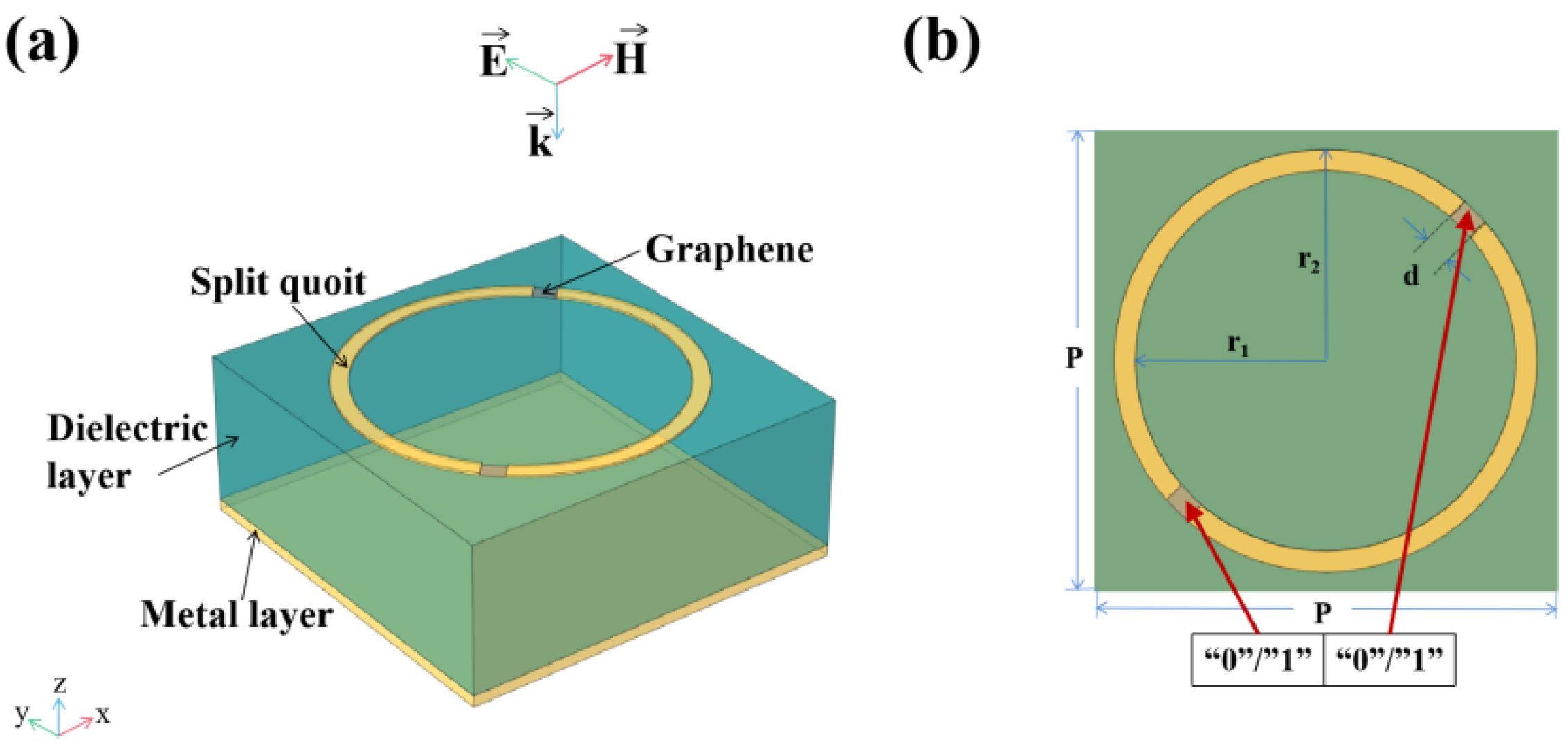
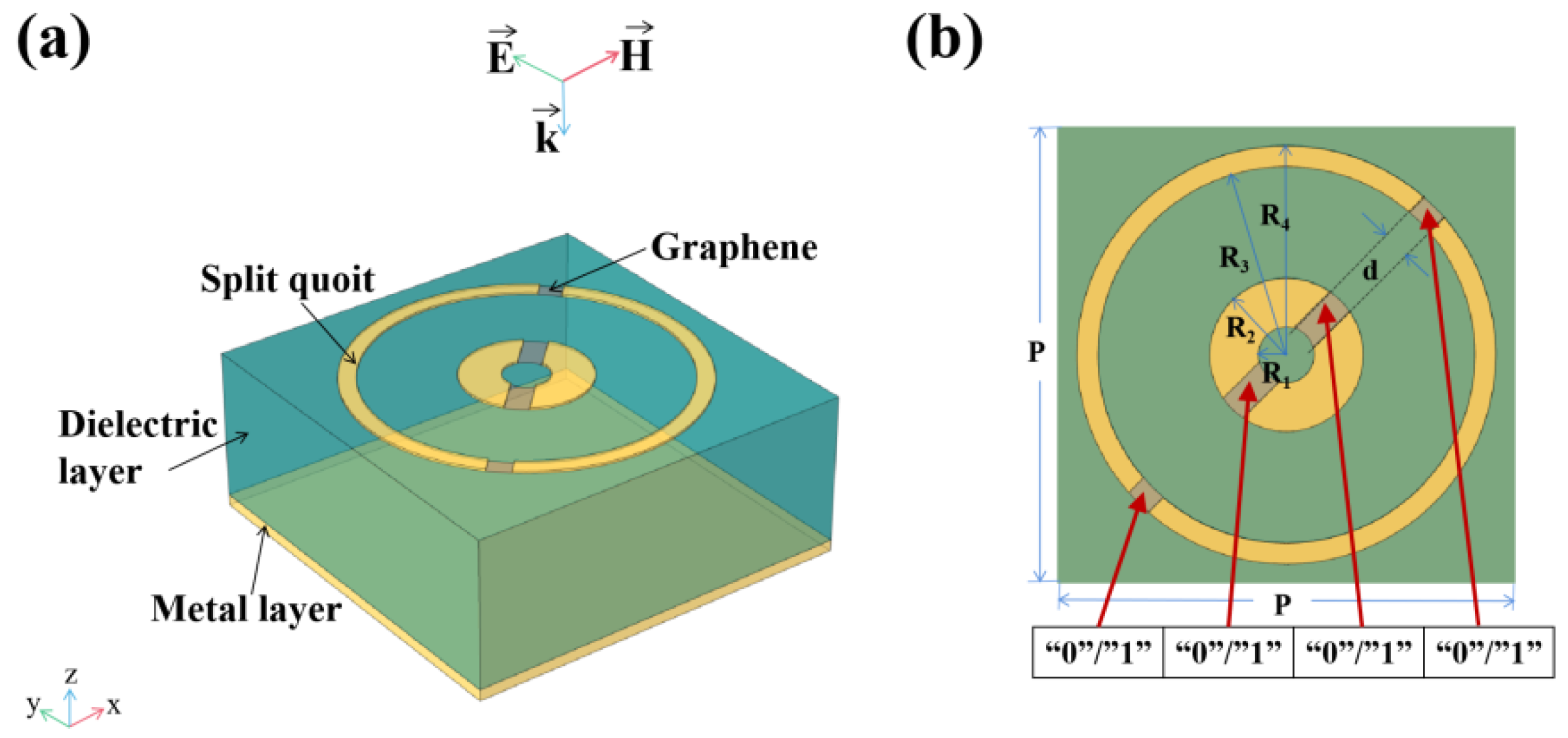
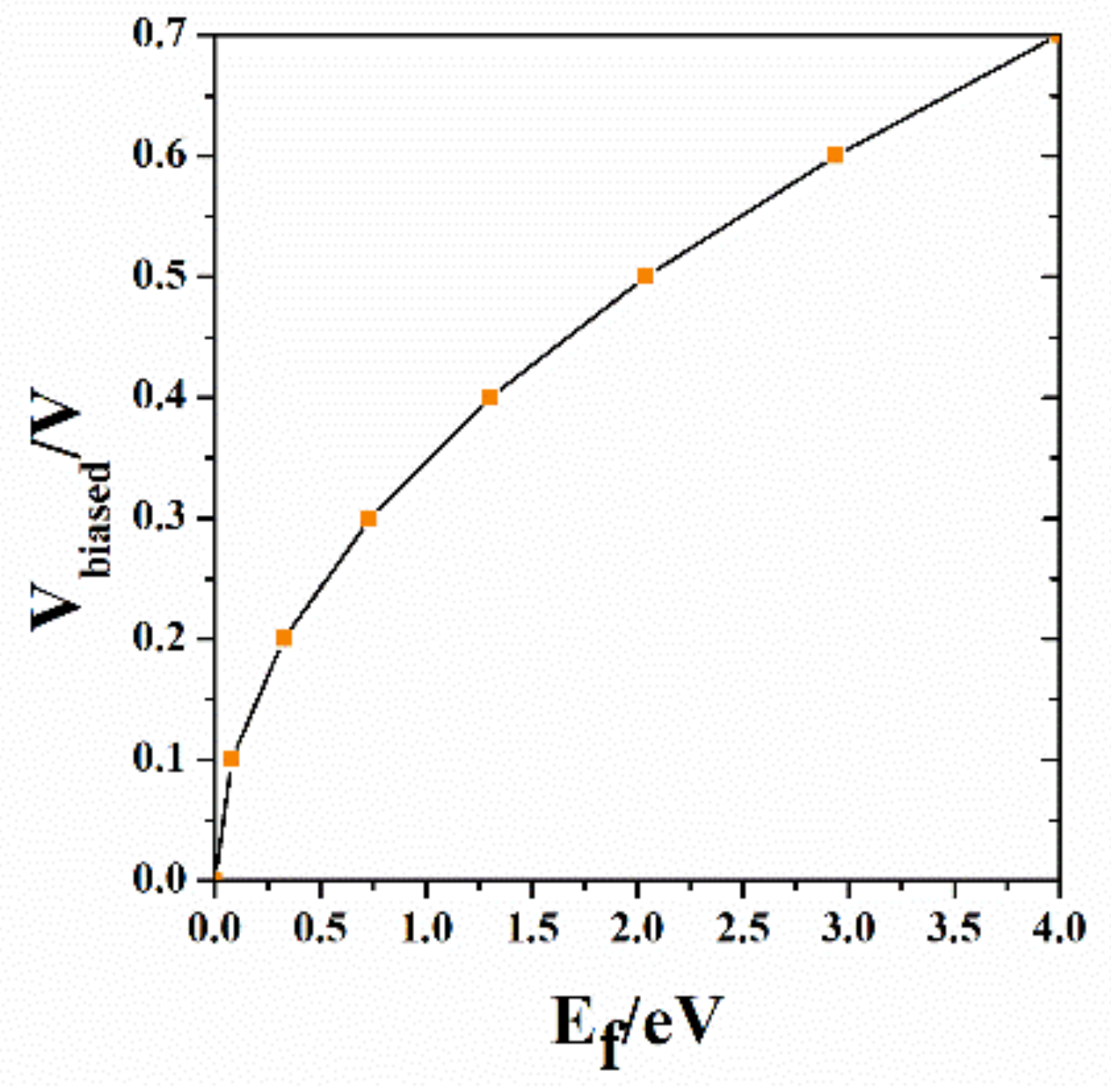

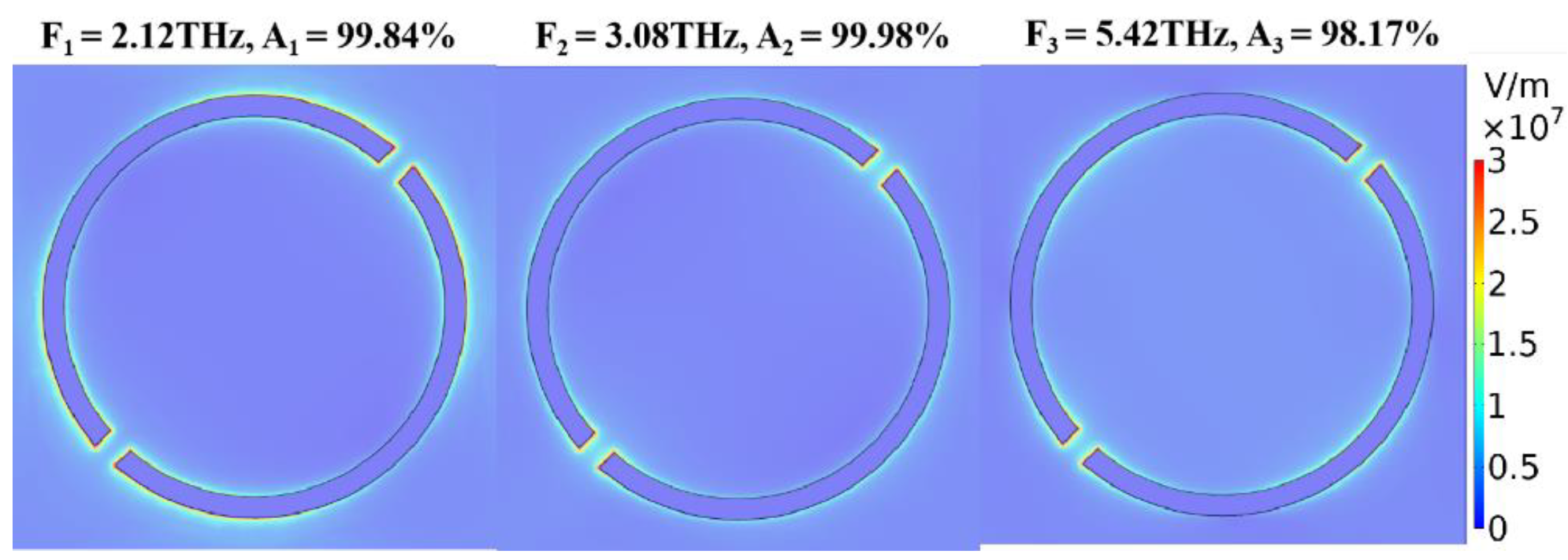

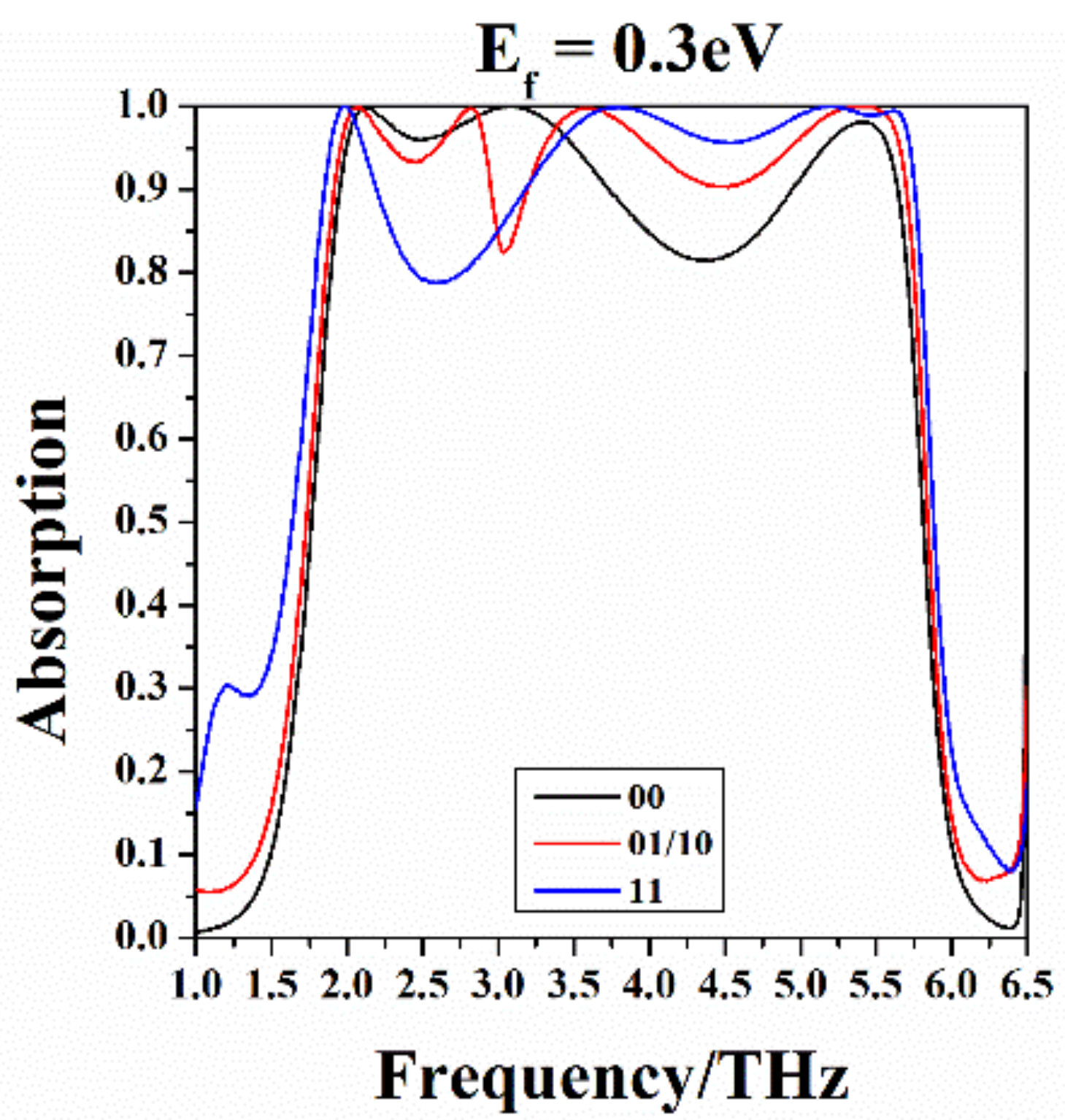

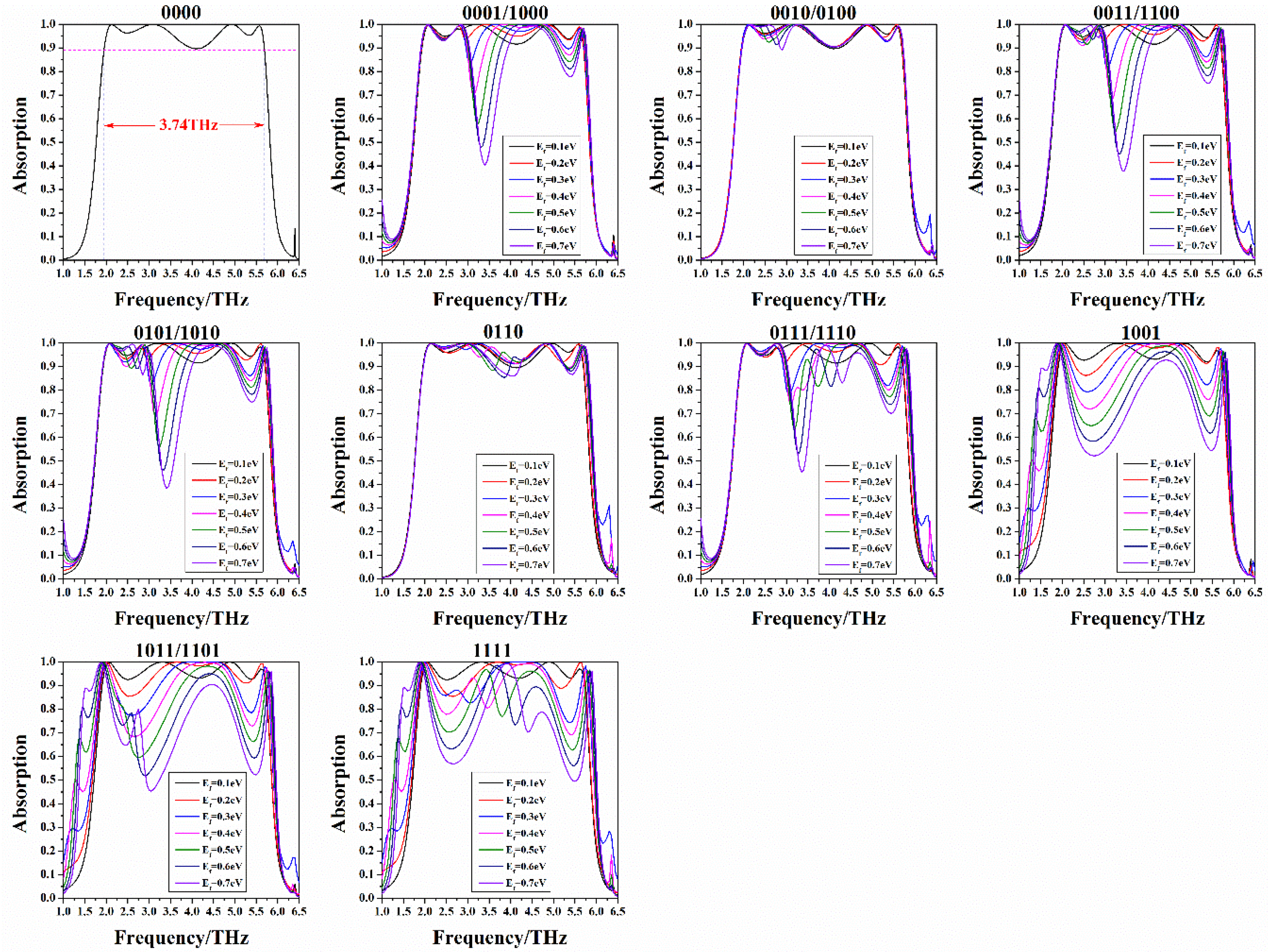

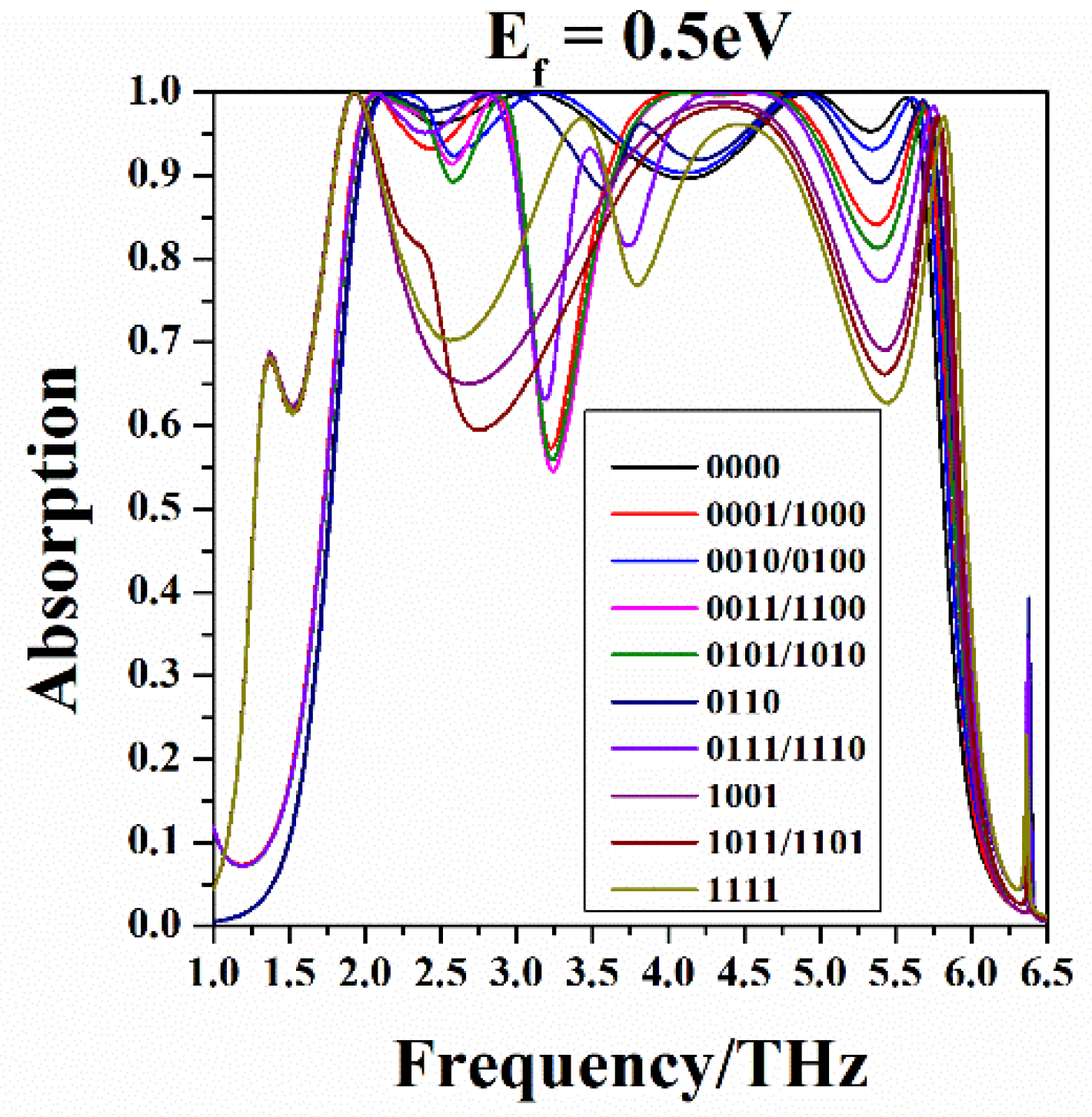
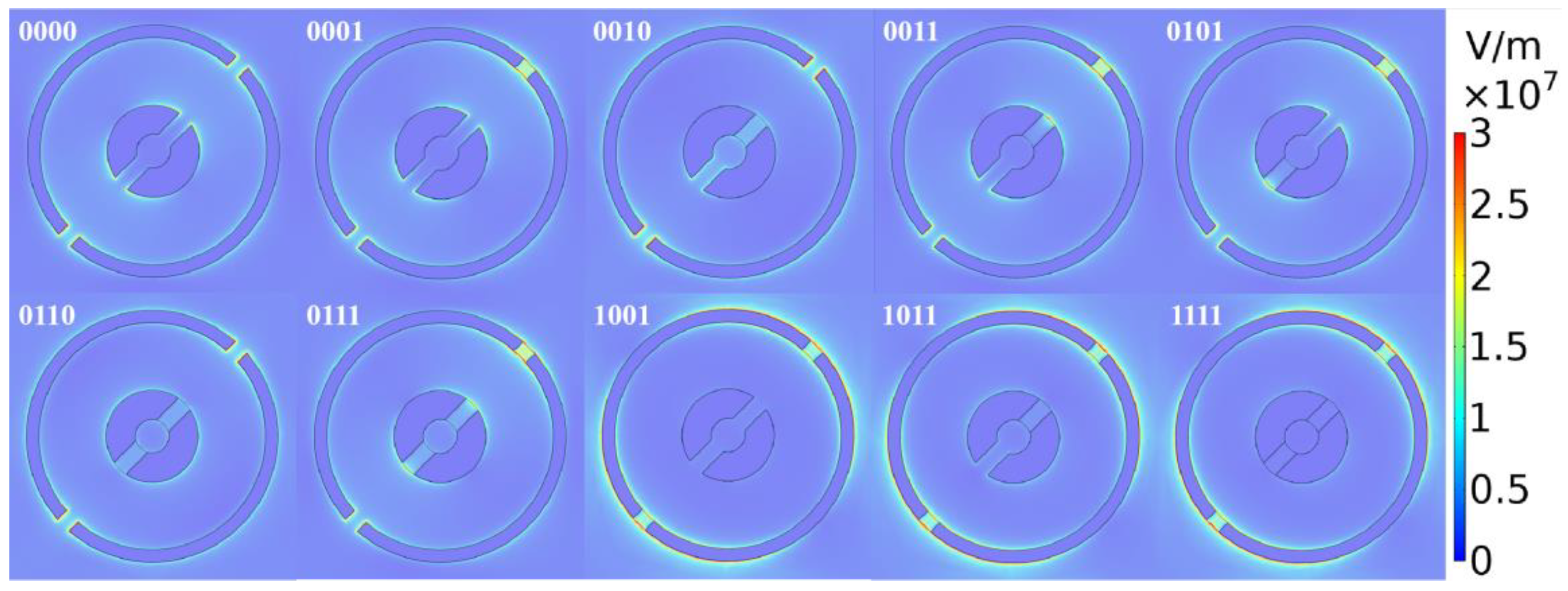
| Parameter | P/μm | r1/μm | r2/μm | R1/μm | R2/μm | R3/μm | R4/μm | d/μm |
|---|---|---|---|---|---|---|---|---|
| Value | 35.0 | 13.5 | 15.0 | 2.0 | 5.5 | 13.5 | 15.0 | 2.0 |
| Code | 00 | 01 | 11 |
|---|---|---|---|
| Resonance frequency/THz | 3.08 | 5.43 | 5.20 |
| Absorption efficiency | 99.98% | 99.97% | 99.99% |
| Code | 00 | 01 | 11 |
|---|---|---|---|
| Bandwidth/THz | 2.46 | 3.51 | 2.91 |
| Code | 0000 | 0001 | 0010 | 0011 | 0101 | 0110 | 0111 | 1001 | 1011 | 1111 |
|---|---|---|---|---|---|---|---|---|---|---|
| Resonance frequency/THz | 4.93 | 4.62 | 3.19 | 4.56 | 4.57 | 2.91 | 4.46 | 1.93 | 1.94 | 1.93 |
| Absorption efficiency | 99.99% | 99.99% | 99.99% | 99.99% | 99.99% | 99.99% | 99.98% | 99.97% | 99.96% | 99.96% |
| Code | 0000 | 0001 | 0010 | 0011 | 0101 | 0110 | 0111 | 1001 | 1011 | 1111 |
|---|---|---|---|---|---|---|---|---|---|---|
| Bandwidth/THz | 3.47 | 2.82 | 3.74 | 2.70 | 2.64 | 3.45 | 2.52 | 1.66 | 1.55 | 1.49 |
© 2020 by the authors. Licensee MDPI, Basel, Switzerland. This article is an open access article distributed under the terms and conditions of the Creative Commons Attribution (CC BY) license (http://creativecommons.org/licenses/by/4.0/).
Share and Cite
Yang, H.; Chen, D.; Mao, Y.; Yang, J. Tunable Broadband THz Waveband Absorbers Based On Graphene for Digital Coding. Nanomaterials 2020, 10, 1844. https://doi.org/10.3390/nano10091844
Yang H, Chen D, Mao Y, Yang J. Tunable Broadband THz Waveband Absorbers Based On Graphene for Digital Coding. Nanomaterials. 2020; 10(9):1844. https://doi.org/10.3390/nano10091844
Chicago/Turabian StyleYang, Huiping, Dingbo Chen, Yuliang Mao, and Junbo Yang. 2020. "Tunable Broadband THz Waveband Absorbers Based On Graphene for Digital Coding" Nanomaterials 10, no. 9: 1844. https://doi.org/10.3390/nano10091844
APA StyleYang, H., Chen, D., Mao, Y., & Yang, J. (2020). Tunable Broadband THz Waveband Absorbers Based On Graphene for Digital Coding. Nanomaterials, 10(9), 1844. https://doi.org/10.3390/nano10091844





